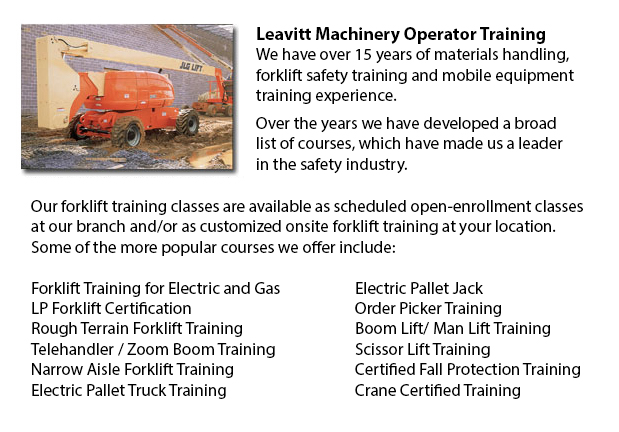
Langley Boom Lift Safey Training - Boom lifts fall under the type of elevated work platform or aerial lifting device. Most normally used in industry, warehousing and construction; the boom lift is so versatile that it could be used in almost any surroundings.
Elevated work platforms enable personnel to access work places that would be unreachable otherwise. There is inherent danger in the operation of these devices. Workers who operate them should be trained in the right operating procedures. Preventing accidents is vital.
Boom Lift Training Programs cover the safety factors involved in using boom lifts. The program is best for those who operate self-propelled elevated work platforms and self-propelled boom supported elevated work platforms. Upon successfully completing the course, participants will be issued a certificate by somebody authorized to verify finishing a hands-on assessment.
In order to help train operators in the safe use of elevated work platforms, industry agencies, federal and local regulators, and lift manufacturers all play a role in establishing standards and providing the necessary information. The most essential ways to avoid accidents associated to the use of elevated work platforms are the following: inspecting machinery, wearing safety gear and conducting site assessment.
Vital safety considerations when operating Boom lifts:
Operators have to observe the minimum safe approach distance (or also called MSAD) from power lines. Voltage could arc across the air to be able to find an easy path to ground.
A telescopic boom should be retracted prior to lowering a work platform so as to maintain stability when the platform nears the ground.
Boom lift workers must tie off to ensure their safety. The lanyard and safety contraption need to be connected to manufacturer provided anchorage, and never to other poles or wires. Tying off may or may not be required in scissor lifts, depending on specific job risks, local regulations, or employer guidelines.
Avoid working on a slope that goes beyond the maximum slope rating as specified by the manufacturer. If the slop goes beyond requirements, then the equipment must be winched or transported over the slope. A grade could be simply measured by laying a minimum 3-feet long straight board or edge on the slope. Next a carpenter's level could be laid on the straight edge and raising the end until it is level. The per-cent slope is attained by measuring the distance to the ground (also referred to as the rise) and dividing the rise by the length of the straight edge. After that multiply by one hundred.
-
Operator Safety Certification | Re-Qualification Certification | In-House Instructor Certification in Langley
Lift trucks are utilized in nearly all warehouse operations and in boat yards and in industrial construction sites. The reach feature of a forklift is a vital component used in several applications like for example whenever a shelving system is being... More -
Skid Steer Loader Certification in Langley
The engine powered skid-steer loader consists of a small and rigid frame, equipped along with lift arms that could connect to numerous industrial attachments and tools to carry out several labor saving jobs. Normally, skid-steer loaders are four-whee... More -
Langley Forklift Training Classes
Langley Forklift Training Classes - Forklift are heavy pieces of industrial machines that are utilized in transporting and the handling of merchandise and materials. They are often known as Lift trucks and are found in all kinds of industries. Employ... More -
Langley Heavy Equipment Operator Certification
Langley Heavy Equipment Operator Certification - The heavy equipment operator is an individual who manipulates the controls and drives various kinds of big machinery. Heavy machines is most commonly used on construction sites in order to deliver supp... More -
Langley Crane License
Langley Crane License - Crane operators ought to be "credentialed", which means they ought to own a crane operator license or certification. Credentialing is considered a mandatory governmental prerequisite to be able to practice as a crane operator.... More -
Langley Forklift Training School
Langley Forklift Training School - Forklift Training School And What It Truly Has To Provide - Industry and federal regulators have established the criteria for forklift safety training according to their current standards and regulations. People wis... More -
Langley Boom Lift Certification
Langley Boom Lift Certification - Elevated work platforms allow maintenance operations and work to be performed at heights that can not be reached by whichever other way. Workers utilizing boom lifts and scissor lifts could learn how to safely operat... More -
Langley Manlift Safety Training
Langley Manlift Safety Training - Manlift operators need to be cognizant and aware of all the potential dangers which are connected with specific classes of scissor lifts. They have to be able to operate the scissor lift in a way that protects not on... More

Forklift Certification Langley
TOLL FREE: 1-888-254-6157
Langley, British Columbia
forkliftcertificationlangley.com
Email Us
About Us


